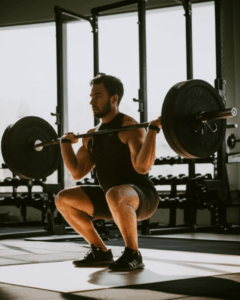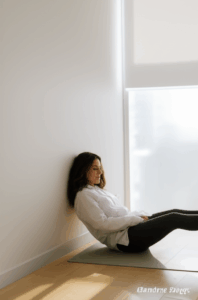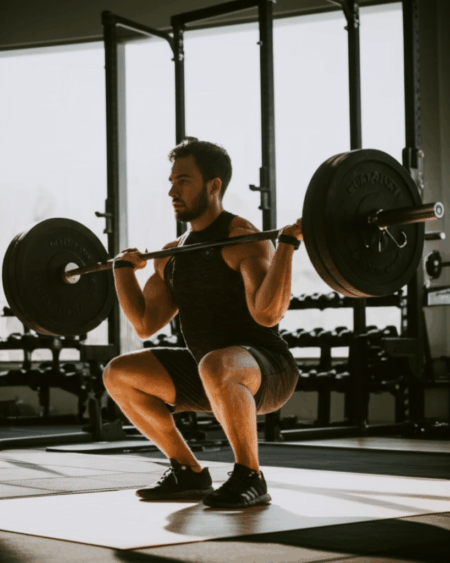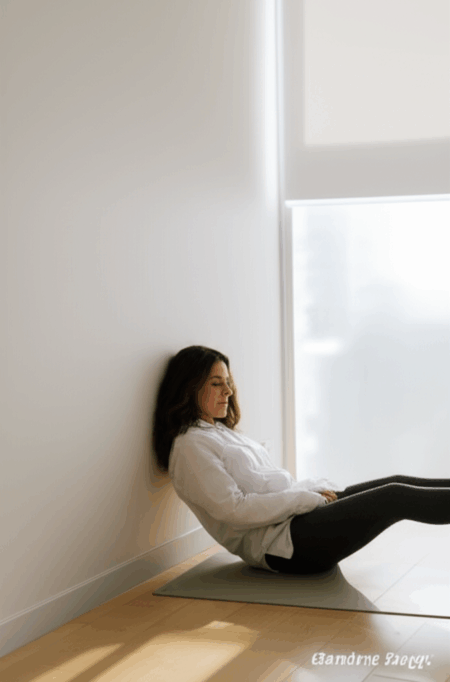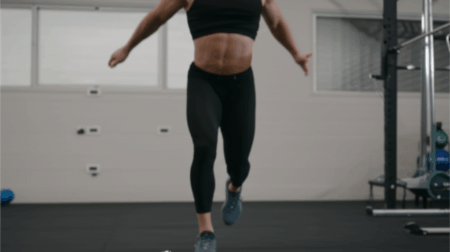Embarking on a fitness journey is a deeply personal experience. What works wonders for one individual might prove ineffective or even detrimental for another. This underscores the importance of customizing your fitness routine to align with your unique needs, goals, and circumstances. A personalized approach not only enhances the effectiveness of your workouts but also significantly increases your adherence and enjoyment, making fitness a sustainable part of your lifestyle.
Why Customize Your Fitness Routine?
Customizing your fitness routine offers a multitude of benefits that a generic, one-size-fits-all approach simply cannot match:
- Enhanced Effectiveness: Tailoring your workouts to your specific goals—whether it’s weight loss, muscle gain, improved endurance, or overall fitness—ensures that you’re targeting the right areas and energy systems.
- Injury Prevention: By considering your current fitness level, any pre-existing conditions, and past injuries, you can modify exercises and intensities to minimize the risk of new injuries or the aggravation of old ones.
- Increased Motivation: When your workouts are enjoyable, challenging, and aligned with your personal preferences, you’re far more likely to stick with your routine long-term.
- Improved Adherence: A personalized routine takes into account your schedule, lifestyle, and available resources, making it easier to integrate fitness into your daily life.
- Faster Progress: By optimizing your workouts for your specific body type and needs, you can accelerate your progress and achieve your goals more efficiently.
Key Factors to Consider When Customizing Your Routine
Several key factors should influence the design of your personalized fitness routine:
1. Define Your Fitness Goals
The first step in customizing your fitness routine is to clearly define your goals. What do you hope to achieve through exercise? Common fitness goals include:
- Weight Loss: Focus on calorie expenditure through cardiovascular exercise and strength training to build muscle mass, which increases your metabolism.
- Muscle Gain: Prioritize strength training with progressive overload, ensuring adequate protein intake to support muscle growth.
- Improved Endurance: Emphasize cardiovascular exercises like running, swimming, or cycling, gradually increasing the duration and intensity of your workouts.
- Increased Strength: Focus on compound exercises that work multiple muscle groups simultaneously, using heavier weights and lower repetitions.
- Enhanced Flexibility: Incorporate regular stretching, yoga, or Pilates to improve your range of motion and reduce the risk of injury.
- Overall Health and Well-being: Aim for a balanced routine that includes cardiovascular exercise, strength training, flexibility work, and mindful movement practices.
2. Assess Your Current Fitness Level
Before diving into a new routine, it’s essential to honestly assess your current fitness level. This will help you determine a safe and effective starting point and guide your progression over time. Consider the following aspects:
- Cardiovascular Fitness: How easily can you perform activities like walking, running, or cycling without becoming overly fatigued?
- Strength: How much weight can you lift for various exercises, and how many repetitions can you perform with good form?
- Flexibility: How easily can you move through a full range of motion in your joints, and are there any areas of tightness or restriction?
- Body Composition: What is your current body fat percentage and muscle mass?
- Past Injuries and Medical Conditions: Do you have any pre-existing injuries or medical conditions that may limit your ability to perform certain exercises?
3. Consider Your Lifestyle and Schedule
Your fitness routine should seamlessly integrate into your lifestyle and schedule, rather than feeling like a burden or obligation. Consider the following factors:
- Time Availability: How much time can you realistically dedicate to exercise each week?
- Location: Do you prefer to work out at a gym, at home, or outdoors?
- Equipment: What equipment do you have access to, and are you comfortable using it?
- Preferences: What types of activities do you enjoy, and what motivates you to exercise?
4. Account for Any Injuries or Limitations
If you have any injuries or limitations, it’s crucial to modify your routine accordingly to avoid further aggravation. This may involve:
- Choosing low-impact exercises: Opt for activities like swimming, cycling, or walking instead of high-impact exercises like running or jumping.
- Adjusting your range of motion: Limit the depth of your squats or lunges to a pain-free range.
- Modifying exercises: Substitute exercises that place less stress on the affected area.
- Working with a physical therapist: Seek professional guidance to develop a safe and effective rehabilitation plan.
Designing Your Personalized Fitness Routine: A Step-by-Step Guide
With these key factors in mind, you can now begin designing your personalized fitness routine:
1. Choose Your Activities
Select activities that align with your goals, fitness level, and preferences. Aim for a mix of cardiovascular exercise, strength training, and flexibility work.
- Cardiovascular Exercise: Choose activities that elevate your heart rate and improve your endurance, such as running, swimming, cycling, dancing, or brisk walking.
- Strength Training: Incorporate exercises that work all major muscle groups, such as squats, lunges, push-ups, rows, and planks. You can use weights, resistance bands, or your own body weight for resistance.
- Flexibility Work: Include regular stretching, yoga, or Pilates to improve your range of motion and reduce the risk of injury.
2. Set Your Frequency, Intensity, Time, and Type (FITT)
Once you’ve chosen your activities, determine the appropriate frequency, intensity, time, and type (FITT) for each:
- Frequency: How many days per week will you perform each activity?
- Intensity: How hard will you work during each activity?
- Time: How long will you spend on each activity?
- Type: What specific activities will you perform?
Here are some general guidelines for each component:
- Cardiovascular Exercise:
- Frequency: 3-5 days per week
- Intensity: Moderate to vigorous
- Time: 30-60 minutes per session
- Type: Choose activities you enjoy, such as running, swimming, cycling, or dancing.
- Strength Training:
- Frequency: 2-3 days per week
- Intensity: Moderate to high (60-80% of your one-repetition maximum)
- Time: 30-60 minutes per session
- Type: Focus on compound exercises that work multiple muscle groups, such as squats, lunges, push-ups, rows, and planks.
- Flexibility Work:
- Frequency: 5-7 days per week
- Intensity: Gentle stretching to the point of mild tension
- Time: 10-30 minutes per session
- Type: Choose stretches that target all major muscle groups, holding each stretch for 15-30 seconds.
3. Structure Your Workouts
Organize your chosen activities into a structured workout plan. Consider the following options:
- Full-Body Workouts: Work all major muscle groups in each workout session. This is a great option for beginners or those with limited time.
- Split Workouts: Divide your workouts by muscle group or body region (e.g., upper body/lower body split, push/pull/legs split). This allows for more focused training of specific areas.
- Circuit Training: Perform a series of exercises back-to-back with minimal rest in between. This is a great way to combine cardiovascular exercise and strength training.
4. Plan for Progressive Overload
To continue making progress, it’s essential to progressively overload your muscles over time. This means gradually increasing the demands on your body, whether by:
- Increasing Weight: Lift heavier weights for your strength training exercises.
- Increasing Repetitions: Perform more repetitions with the same weight.
- Increasing Sets: Add more sets to your workouts.
- Increasing Intensity: Run faster, swim harder, or cycle at a higher resistance.
- Increasing Duration: Exercise for longer periods of time.
- Decreasing Rest: Reduce the amount of rest between sets.
5. Incorporate Warm-up and Cool-down
Always begin your workouts with a warm-up to prepare your body for exercise and reduce the risk of injury. A warm-up should include:
- Light Cardiovascular Exercise: 5-10 minutes of light cardio, such as walking or jogging.
- Dynamic Stretching: 5-10 minutes of dynamic stretches, such as arm circles, leg swings, and torso twists.
End your workouts with a cool-down to gradually bring your heart rate back to normal and promote recovery. A cool-down should include:
- Light Cardiovascular Exercise: 5-10 minutes of light cardio, such as walking or stretching.
- Static Stretching: 5-10 minutes of static stretches, holding each stretch for 15-30 seconds.
6. Monitor Your Progress and Make Adjustments
Regularly monitor your progress and make adjustments to your routine as needed. This will help you stay on track, avoid plateaus, and continue making progress towards your goals. Consider tracking the following metrics:
- Weight: Monitor your weight regularly, but don’t obsess over the numbers.
- Measurements: Track your body measurements (e.g., waist circumference, chest size, arm size) to monitor changes in body composition.
- Strength: Record the weights you lift and the number of repetitions you perform.
- Endurance: Track the distance you run, swim, or cycle, and the time it takes you to complete those activities.
- Flexibility: Monitor your range of motion in various joints.
- Energy Levels: Pay attention to how you feel during and after your workouts.
- Motivation: Assess your motivation levels and adjust your routine as needed to stay engaged and enthusiastic.
Example Personalized Fitness Routines
Here are a few examples of personalized fitness routines tailored to different goals and fitness levels:
Routine 1: Weight Loss for Beginners (Home-Based)
Goal: Lose weight and improve overall fitness.
Fitness Level: Beginner
Location: Home
Equipment: None
- Monday:
- Warm-up: 5 minutes of light cardio (e.g., marching in place, arm circles)
- Workout:
- Bodyweight squats: 3 sets of 10-12 repetitions
- Push-ups (on knees if needed): 3 sets of as many repetitions as possible (AMRAP)
- Walking lunges: 3 sets of 10-12 repetitions per leg
- Plank: 3 sets, holding for 30-60 seconds
- Cool-down: 5 minutes of static stretching (e.g., hamstring stretch, quad stretch, calf stretch)
- Tuesday:
- 30 minutes of brisk walking
- Wednesday:
- Rest
- Thursday:
- Repeat Monday’s workout
- Friday:
- 30 minutes of cycling
- Saturday:
- Rest
- Sunday:
- Yoga or Pilates for 45 minutes
- Monday:
Routine 2: Muscle Gain for Intermediate (Gym-Based)
Goal: Build muscle mass and increase strength.
Fitness Level: Intermediate
Location: Gym
Equipment: Weights, machines
- Monday:
- Warm-up: 5 minutes of cardio, 5 minutes of dynamic stretching
- Workout: Chest and Triceps
- Bench press: 3 sets of 8-12 repetitions
- Incline dumbbell press: 3 sets of 8-12 repetitions
- Dumbbell flyes: 3 sets of 12-15 repetitions
- Close-grip bench press: 3 sets of 8-12 repetitions
- Overhead triceps extension: 3 sets of 12-15 repetitions
- Cool-down: 5 minutes of static stretching (e.g., chest stretch, triceps stretch)
- Tuesday:
- Warm-up: 5 minutes of cardio, 5 minutes of dynamic stretching
- Workout: Back and Biceps
- Pull-ups (assisted if needed): 3 sets of as many repetitions as possible (AMRAP)
- Barbell rows: 3 sets of 8-12 repetitions
- Lat pulldowns: 3 sets of 12-15 repetitions
- Bicep curls: 3 sets of 12-15 repetitions
- Hammer curls: 3 sets of 12-15 repetitions
- Cool-down: 5 minutes of static stretching (e.g., lat stretch, bicep stretch)
- Wednesday:
- Rest
- Thursday:
- Warm-up: 5 minutes of cardio, 5 minutes of dynamic stretching
- Workout: Legs and Shoulders
- Barbell squats: 3 sets of 8-12 repetitions
- Leg press: 3 sets of 12-15 repetitions
- Leg extensions: 3 sets of 15-20 repetitions
- Hamstring curls: 3 sets of 15-20 repetitions
- Overhead press: 3 sets of 8-12 repetitions
- Lateral raises: 3 sets of 12-15 repetitions
- Front raises: 3 sets of 12-15 repetitions
- Cool-down: 5 minutes of static stretching (e.g., quad stretch, hamstring stretch, shoulder stretch)
- Friday:
- 30 minutes of swimming
- Saturday:
- Rest
- Sunday:
- Active Recovery: Yoga or light outdoor activity.
- Monday:
Staying Active While Recovering From an Injury
An injury doesn’t have to sideline you from your fitness goals. It’s crucial to modify your exercise routine to accommodate the injury and continue staying active.
Here are some tips for maintaining fitness while recovering from an injury:
- Consult with a healthcare professional: Before making any changes to your exercise routine, consult with your doctor or physical therapist to get their recommendations.
- Focus on pain-free movements: Choose exercises that don’t cause pain or discomfort. If you experience pain, stop the exercise immediately.
- Modify exercises: Adjust the intensity, duration, or range of motion of exercises to reduce stress on the injured area.
- Try a new exercise: Consider trying a new activity that doesn’t put stress on the injured area.
- Work on a different area of your body: Focus on strengthening other muscle groups while your injury heals.
- Stay active: Even light activity, such as walking or stretching, can help maintain your fitness level and promote healing.
The Role of AI in Personalizing Fitness Routines
Artificial intelligence (AI) is increasingly being used to personalize fitness routines. AI-powered apps and platforms can analyze your fitness data, goals, and preferences to create customized workout plans. These plans can be adjusted over time based on your progress and feedback.
Some of the ways AI is used in fitness include:
- Generating personalized workout plans: AI can create workout plans tailored to your specific goals, fitness level, and preferences.
- Optimizing sets, reps, and weight: AI can optimize the number of sets, reps, and weight for each exercise in your workout.
- Tracking progress: AI can track your progress and provide feedback on your performance.
- Adjusting workouts: AI can adjust your workouts based on your progress and feedback.
- Providing motivation: AI can provide motivation and support to help you stick to your fitness goals.
Conclusion
Customizing your fitness routine is essential for maximizing effectiveness, preventing injuries, and maintaining motivation. By considering your goals, fitness level, lifestyle, and any injuries or limitations, you can design a personalized plan that works for you. Remember to start slow, progressively overload your muscles, and monitor your progress regularly. With a tailored approach, you can achieve your fitness goals and enjoy a healthier, more active life.


